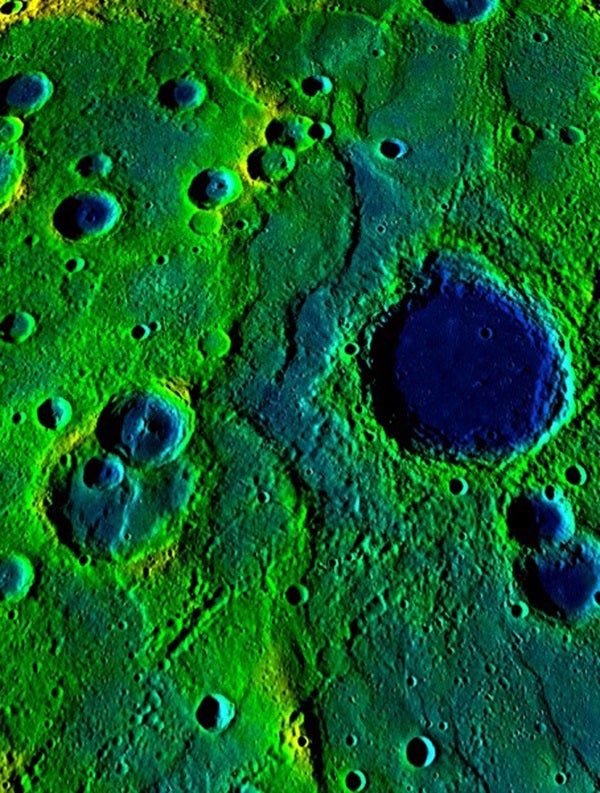Unlike Earth, with its numerous tectonic plates, Mercury has a single rigid top rocky layer. Prior to the MESSENGER mission, only about 45 percent of Mercury’s surface had been imaged by a spacecraft. Old estimates, based on this nonglobal coverage, suggested that the planet had contracted radially by about 0.5 to 2 miles (0.8 to 3 kilometers), substantially less than that indicated by models of the planet’s thermal history. Those models predicted a radial contraction of about 3 to 6 miles (5 to 10km), starting from the Late Heavy Bombardment of the solar system, which ended about 3.8 billion years ago.
The new results, which are based on the first comprehensive survey of the planet’s surface, show that Mercury contracted radially by as much as 4.4 miles (7km), substantially more than the old estimates, but in agreement with the thermal models. Mercury’s modern radius is 1,516 miles (2,440km).
“These new results resolved a decades-old paradox between thermal history models and estimates of Mercury’s contraction,” said Paul Byrne from Carnegie’s Department of Terrestrial Magnetism in Washington, D.C. “Now the history of heat production and loss and global contraction are consistent. Interestingly, our findings are also reminiscent of now-obsolete models for how large-scale geological deformation occurred on Earth when the scientific community thought that the Earth only had one tectonic plate. Those models were developed to explain mountain building and tectonic activity in the 19th century before plate tectonics theory.”
Byrne and his co-authors identified a much greater number and variety of geological structures on the planet than had been recognized in previous research. They identified 5,934 ridges and scarps attributed to global contraction, which ranged from 5 to 560 miles (9 to 900km) in length.
The researchers used two complementary techniques to estimate the contraction from their global survey of structures. Although the two estimates of radius change differed by 0.6 to 1 mile (1 to 1.6km), both were substantially greater than old estimates.
“I became interested in the thermal evolution of Mercury’s interior when the Mariner 10 spacecraft sent back images of the planet’s great scarps in 1974–75, but the thermal history models predicted much more global contraction than the geologists inferred from the scarps then observed, even correcting for the fact that Mariner 10 imaged less than half of Mercury’s surface,” said Sean Solomon from Columbia University in New York City. “This discrepancy between theory and observation, a major puzzle for four decades, has finally been resolved. It is wonderfully affirming to see that our theoretical understanding is at last matched by geological evidence.”










